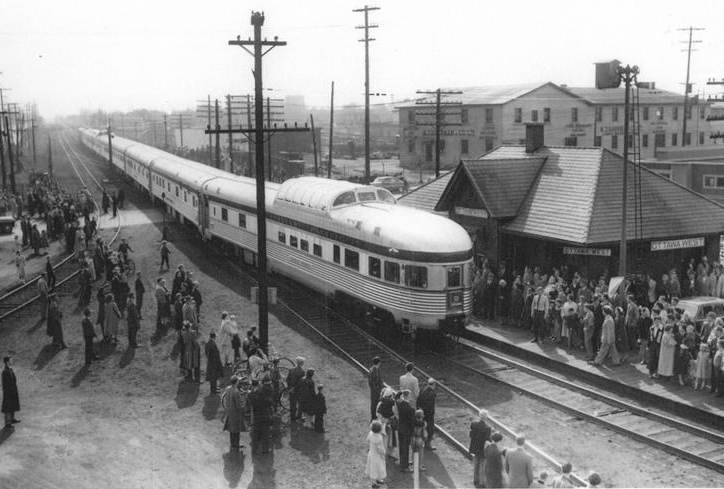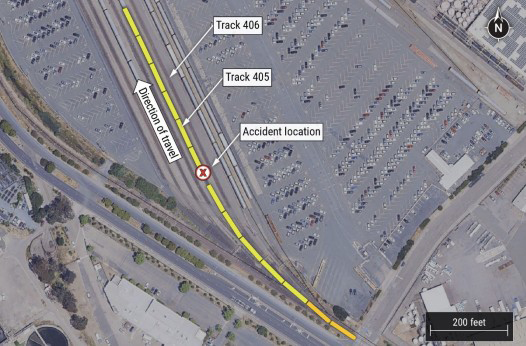The opportunity, short line executives say, is that Class I railroads focus more on carload traffic, provide service that’s more consistent and reliable, and spin off routes to create new short lines.
The risk, they say, is that Class I railroad that shifting to PSR-based operating plans move too quickly, don’t consult their short line partners, and make operational changes that result in service disruptions.
Representatives of short line holding companies Anacostia Rail Holdings, Genesee & Wyoming, and R.J. Corman, along with New England regional Pan Am Railways, discussed issues facing smaller railroads during a panel session in November at the RailTrends 2018 conference.
Over the long-term, Precision Scheduled Railroading is good for everybody, says Michael Miller, the president of G&W’s North American operations. The single biggest opportunity, he says, is providing more reliable service that will enable railroads to regain market share lost to trucks.
Stefan Loeb, Watco’s chief commercial officer, says there’s an opportunity for significant growth as Class I railroads spin off routes to short lines. Short lines can grow by offering services that don’t fit into PSR and then working closely with their Class I partners, he says.
It’s a model that Watco is following on the Decatur & Eastern Illinois, which began operations in September on 126.7-miles of track that CSX Transportation cast off in Illinois and Indiana.
The D&EI is serving customers daily and pre-blocking outbound traffic for CSX, effectively becoming a local serving yard for the Class I, Loeb says.
Traffic levels are almost triple Watco’s projections after two months.
“We’re winning market share,” Loeb says.
Trip-plan compliance for each carload, a focus of Precision Scheduled Railroading, is one key to success, says Eric Jakubowski, chief commercial officer for Anacostia Rail Holdings.
Jakubowski previously served as director of network strategy for Canadian National’s U.S. operations. CN is ahead of the other Class I railroads’ on trip-plan compliance, he says, but the industry won’t be able to tap the full benefits of PSR without having dock-to-dock trip plans for interline moves. And that’s something that’s lacking today.
Short lines suffered through rocky, rapid-fire implementation of Precision Scheduled Railroading under E. Hunter Harrison at CN, Canadian Pacific, and CSX.
So when Union Pacific, Norfolk Southern, and Kansas City Southern announced that they would, to varying degrees, be adopting operating plans based on Precision Scheduled Railroading, it caused angst among short lines, says Justin Broyles, vice president of commercial development at R.J. Corman.
CP, he noted, became inwardly focused while Harrison was at the helm and this fall held its first short line conference in a decade.
“This needs to be a partnership,” Broyles says.
Another PSR pitfall, the executives say, is trying to precisely match a railroad’s resources with traffic demand.
“One concern we all have is that we can’t get into a game of trying to chase the perfect amount of assets,” Loeb says.
The Class I railroads missed an opportunity to capture more market share this year as truck capacity tightened and freight demand surged. Traffic grew, but railroads couldn’t fully capitalize on the opportunity because they were caught short of crews and locomotives.
The RailTrends conference is sponsored by independent analyst Anthony B. Hatch of ABH Consulting and industry trade publication Progressive Railroading.














Thanks for the good question Don.
I’ll volley one back: how does that happen when no interchange is involved, but a connection from one train to another happens at an intermediate originating road terminal? It seems to me that the only difference is the lack of data sharing about which interchange point and receiving road’s trip plan strategies and alternatives and how they may impact the end to end trip plan ought to be incorporated into the larger end to end plan.
Yes I know these are siloed systems currently, and such “proprietary data” is jealously guarded. But that strikes me as only a matter of (quite possibly counterproductive) policy, as I can’t think of any technical reason why it wouldn’t be possible to combine “federated” trip plan alternatives on either side of one or more interchange points into one end to end plan.
And if there remain non-technical obstacles then I think we have another powerful rationale to advocate for end to end transcontinental as well as north-south (that is Canada-Mexico) mergers into a North American duopoly with tight integration with short line partners into each of the two unified TP systems.
Paul – This trip plan stuff is a lot harder than it looks. If a foreign road gives me an ETI for a car at a location, how do I create a plan on my end to send back a good ETA for the shipment? Maybe I have two trains that run from that location. One’s a run-thru multilevel, one a merchandise train that originates there. How do I create universal rules that don’t break that plan that shipment to the right train on my RR? It can get pretty squishy pretty fast.
I can’t overemphasize how important all of the points made here are. And the “dock to dock interline trip plans” one is still a difficult problem yet to be solved.